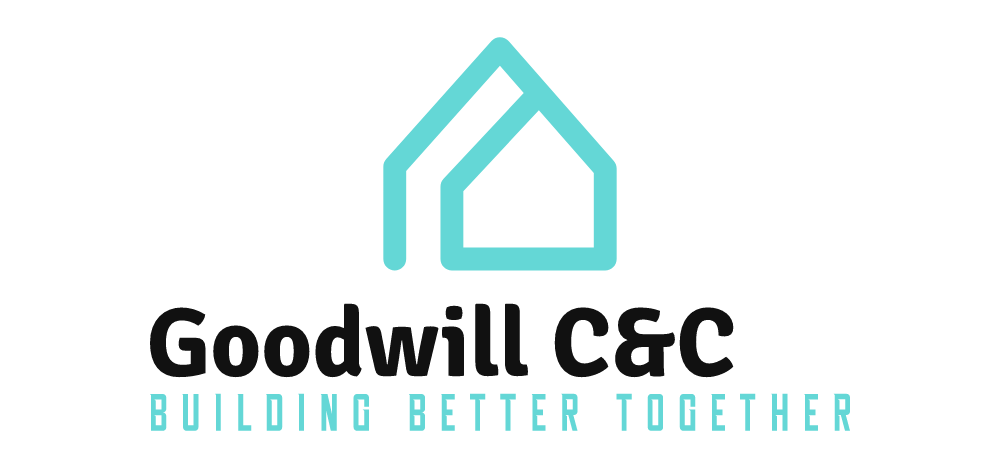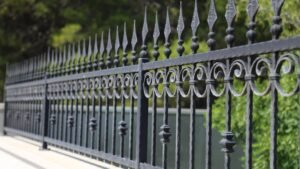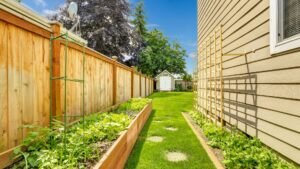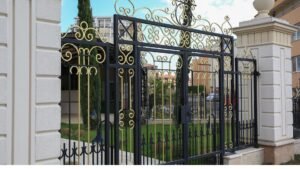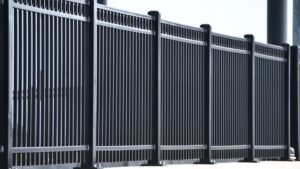Welcome to our comprehensive guide on understanding fencing costs per meter in New Zealand. Whether you’re a homeowner planning to enclose your yard, a farmer needing to secure large tracts of land, or a business owner enhancing property security, knowing the costs involved in fencing is crucial for budgeting and planning. In this post, we’ll explore the various types of fencing available, discuss what factors influence the cost, and provide you with practical tips to estimate your fencing expenses accurately. From wooden fences to high-tech options, and from urban settings to rugged rural landscapes, we’ll cover all you need to know to make an informed decision that meets both your needs and budget. Let’s dive into the world of fencing and discover how to navigate its costs effectively.
On average, fencing costs in New Zealand range from NZ$25 per meter for basic wire fencing to over NZ$300 per meter for premium materials like composites or metals. Prices vary significantly based on the type of fencing material, installation complexity, and geographical factors. Accurate budgeting requires careful measurement of property lines and consideration of additional expenses such as labor, permits, and adjustments for terrain.
Table of Contents
Types Of Fencing Commonly Used In New Zealand
When it comes to fencing solutions in New Zealand, homeowners and farmers alike have a variety of options to consider. Each type of fencing offers distinct benefits and considerations, including cost, durability, and suitability for specific uses. Let’s delve into some of the most popular fencing types you can find in New Zealand, ranging from traditional wooden fences to innovative composite options.
Wooden Fences
Wooden fences are a classic choice, appreciated for their natural appearance and versatility. They are commonly used for residential properties, providing a warm and inviting look that complements various architectural styles. In terms of cost, wooden fences are generally affordable, but the price can vary depending on the type of wood used. Durability is another important factor; while some woods are naturally resistant to rot and pests, others may require regular treatments to maintain their condition. Overall, wooden fences are best for those seeking a balance of cost and aesthetic appeal.
Wire Fences
Wire fences are particularly prevalent on farms and large properties in New Zealand. They come in several varieties, including barbed wire and electric fences, each serving different security or containment needs. Barbed wire fences are effective for deterring animals and unauthorized access, making them suitable for boundaries and secure areas on farms. Electric fences are used primarily for livestock control, helping to keep animals within designated areas without causing harm. The cost of wire fencing can vary based on the material and scale of the installation, but it remains a cost-effective solution for extensive properties.
Metal Fences
Metal fences, including options made from aluminum and steel, are favored for their durability and security features. Aluminum fences offer a lightweight and rust-resistant alternative, ideal for residential and decorative uses. Steel fences, on the other hand, are sturdier and more suited to high-security areas due to their strength. Both types provide a modern look and are relatively low maintenance compared to other fencing materials. While the initial cost might be higher, their longevity and minimal upkeep make metal fences a worthwhile investment.
Vinyl Fences
Vinyl fencing is a popular choice for those looking for a low-maintenance option. Unlike wood, vinyl does not require painting or staining and is resistant to weathering, insects, and decay. Vinyl fences can last many years with minimal upkeep, making them a cost-effective alternative in the long run. They are available in a variety of styles and colors, allowing for customization to fit any home’s exterior. While the upfront cost might be higher than some other materials, the longevity and reduced maintenance requirements of vinyl fences offer significant long-term savings.
Composite Fences
Composite fencing is made from a blend of wood and plastic fibers, combining the best attributes of both materials. These fences are praised for their durability and low environmental impact, as many are made from recycled materials. Composite fences withstand weather conditions better than traditional wood and require little to no maintenance over their lifespan. Although they can be more expensive upfront, their durability and eco-friendly properties make them an appealing choice for environmentally conscious consumers.
Each type of fencing has its unique set of features and benefits, making it important for New Zealand property owners to consider their specific needs and budget when choosing the right fencing solution. Whether you prioritize aesthetics, maintenance, security, or environmental sustainability, there is a fencing option available to meet your requirements.

Factors Affecting Fencing Costs
When planning to install a fence, understanding the various factors that impact the cost is crucial. This knowledge not only helps in budgeting accurately but also ensures that you make informed decisions. Let’s delve into the main factors that determine fencing costs, ranging from material choices to labor and legal requirements.
Material Costs: Choosing the Right Fence Material
One of the most significant factors affecting the price of your fencing project is the material used. Each material, from wood and vinyl to aluminum and chain-link, comes with its own price tag, durability, maintenance needs, and aesthetic appeal. For instance, wood offers a classic look but requires regular maintenance, whereas vinyl, though initially more expensive, is low maintenance and long-lasting. Selecting the right material based on your budget, the climate of your area, and the desired appearance is essential to control costs effectively.
Labor Costs: Professional Installation vs. DIY
The decision between hiring professionals or undertaking a DIY fence installation significantly impacts the overall cost. Professional installation ensures that the job is done efficiently and correctly, potentially saving you future repair costs. However, it comes at a premium. Conversely, a DIY approach can reduce expenses but requires a good skill set and understanding of the installation process. Weighing the cost of professional labor against the potential challenges and time investment of a DIY project is crucial.
Land Topography: Navigating Additional Challenges
The terrain where the fence will be installed can also play a critical role in the cost. Uneven land, slopes, and other challenging terrains may require additional labor and materials to ensure the fence is stable and aesthetically pleasing. These factors can significantly increase the project cost compared to installing a fence on flat, clear land.
Fence Height and Length: Size Matters
The dimensions of the fence particularly its height and length directly influence the total cost. Taller and longer fences require more materials and more labor, which naturally increases expenses. Careful planning of the fence dimensions based on your needs for privacy, security, or containment can help manage costs without compromising on essential factors.
Permits and Regulations: Staying Compliant
Finally, local building codes and regulations can affect your fencing project’s cost. Most localities require permits for fence installations, which come with fees. Additionally, there might be specific regulations regarding the height, style, or material of the fence that could limit your options or necessitate a more expensive solution. Understanding and adhering to these legal requirements is crucial to avoid fines and ensure that the fence meets all local standards.
By considering these factors material costs, labor, land topography, fence dimensions, and local permits and regulations you can effectively plan and budget your fencing project. Each element contributes to the overall cost and must be balanced against your specific requirements and constraints. Proper planning and consultation with professionals can lead to a successful installation that meets your needs and adheres to your budget.
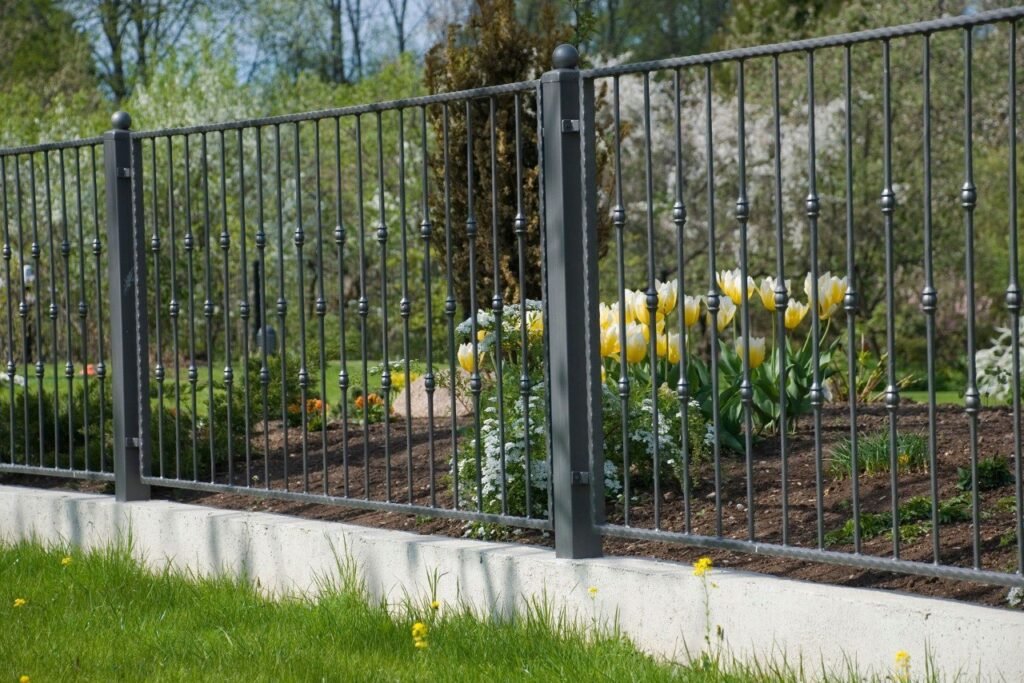
Estimating Your Fencing Costs
When planning to install a new fence, understanding and estimating your fencing costs is crucial for budgeting and ensuring that your project goes smoothly without unexpected expenses. This guide will help you navigate through the various steps involved in calculating your fencing costs, from measuring your property to accounting for additional costs like gates and custom designs.
How to Measure Your Property
To begin with, accurate measurements of your property are essential. Here’s a step-by-step guide to help you:
1. Gather Tools: You’ll need a long measuring tape (at least 100 feet), a notepad, and a pencil. A wheel measure can also be handy for larger properties.
2. Identify Boundary Lines: Ensure you know the exact boundary lines of your property to avoid disputes with neighbors. Check your property deed or consult with a surveyor if necessary.
3. Measure Perimeter: Walk along the boundary lines, measuring each side of your property. Record each length as you go.
4. Account for Variations: Note any slope or irregular shape in your property, as these may affect the amount of fencing material needed.
Accurate property measurements are critical as they directly influence the amount of materials required and the overall cost of the fencing project.
Calculating Material Needs
Once you have your property measurements, you can calculate how much fencing material you’ll need:
Determine Fence Type: Decide on the type of fence you want (wood, metal, vinyl, etc.), as this will affect the quantity and cost of materials.
Calculate Fence Panels: Most fences are sold in panels. Divide the total length of your property’s perimeter by the width of each panel to determine how many panels are required.
Include Overlap: If the fence design includes overlapping panels or needs posts between panels, remember to include these in your calculations.
Consider Wastage: Always add 10-15% extra material to account for cuts, mistakes, and wastage.
Understanding how to calculate your material needs will help you budget more accurately and can prevent last-minute runs to the store.
Labor Cost Estimations
Labor costs can vary significantly based on several factors:
Type of Fence: Some fences require more complex installation processes which can be labor-intensive.
Property Terrain: Uneven terrain or obstacles like rocks and trees can increase installation time, thus increasing labor costs.
Local Labor Rates: Labor costs vary by region; urban areas might have higher rates compared to rural settings.
Size of the Project: Larger projects typically reduce the per unit cost due to economies of scale.
Estimating labor costs accurately requires considering all these factors. It’s often recommended to get quotes from several contractors to compare prices and understand the market rate in your area.
Additional Costs
Finally, it’s important to factor in the additional costs that may affect your budget:
Gates: Adding gates will increase costs. The number and type of gates (manual or automatic) should be considered.
Finishes and Treatments: If you’re choosing a wood fence, you might want additional treatments for weather resistance. Metal fences might need painting or powder coating.
Custom Designs: Custom elements like decorative posts, unique colors, or patterns can significantly increase the cost.
By including all these costs in your initial budget, you can avoid surprises and ensure that your fencing project is both successful and financially manageable.
Planning your fencing project with these detailed steps not only helps in achieving accurate estimations but also assists in managing your project efficiently from start to finish. Whether you’re doing it yourself or hiring professionals, preparation is key to a successful fencing installation.
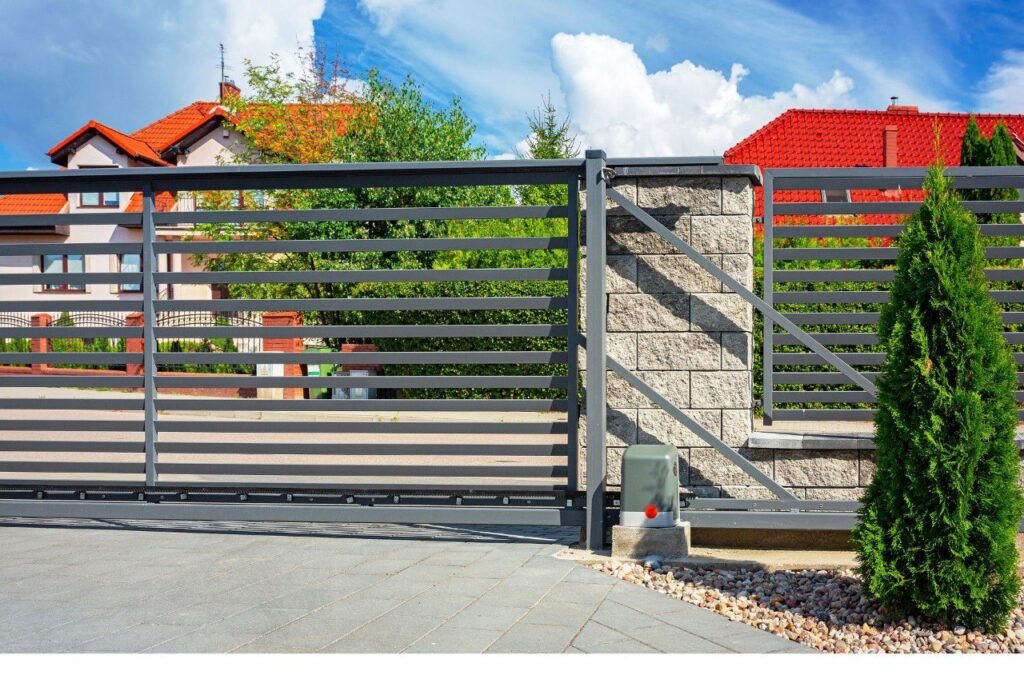
Cost Comparison Of Different Fencing Options
When deciding on the best fencing option for your property, understanding the cost implications is crucial. In this comprehensive guide, we’ll explore the financial aspects of different fencing types, helping you make an informed decision based on your budget and needs.
Cost Analysis Table
We begin with a detailed Cost Analysis Table that presents the costs per meter for various types of fences. This table includes a range of materials like wood, vinyl, aluminum, and chain-link, among others. Each material is assessed based on factors such as material cost, installation labor, and maintenance expenses over time. By examining this table, you can easily compare the upfront and long-term costs associated with each fencing type, making it simpler to align your choice with your financial constraints and long-term property plans.
Case Studies
To give you a clearer picture of what these costs might look like in real-life scenarios, we include several case studies of typical installations. Each case study details the total cost of installation, including both labor and materials, for different types of properties ranging from residential homes to commercial estates. These examples help illustrate how the choice of material impacts the overall cost in various settings, providing you with a practical perspective on what to expect when planning your fencing project.
Pros and Cons
Finally, we delve into the pros and cons of each fence type, focusing specifically on their cost-effectiveness. For instance, while wood fences may offer a lower initial investment, they typically require more maintenance over time, which can add to the total cost of ownership. In contrast, materials like vinyl or aluminum, though possibly higher in initial cost, often boast lower maintenance expenses, offering a more cost-effective solution in the long run.
This section not only helps you weigh the immediate financial outlay but also considers the long-term financial implications of each fencing option. Whether you’re looking for something economical upfront or more durable with fewer long-term costs, this analysis provides all the information you need to make a cost-effective decision.
By understanding the full spectrum of costs associated with different fencing materials, you can better manage your budget and choose a fence that offers the best value for your investment. Whether you’re securing a small residential lot or enclosing a large commercial property, this guide ensures you have all the facts at hand to choose wisely.

How To Reduce Fencing Costs
When it comes to installing or replacing a fence, the costs can quickly escalate. However, with careful planning and smart choices, it’s possible to significantly reduce these expenses. In this detailed guide, we’ll explore practical strategies for minimizing fencing costs without compromising on quality or aesthetics. Whether you’re a budget-conscious homeowner or a property manager looking to cut costs, these tips will help you make informed decisions.
Choosing the Right Materials
Selecting the appropriate materials is crucial in managing the cost of your fencing project. Different materials vary not only in price but also in durability, maintenance needs, and aesthetic appeal. Here are some cost-effective choices:
Vinyl Fencing: While the initial cost might be higher than wood, vinyl fencing is durable, requires little maintenance, and does not need to be painted or treated against pests and rot.
Chain Link Fencing: This is one of the most economical options available. It provides durability and security, though it lacks the visual appeal of wood or vinyl.
Bamboo Fencing: For those looking for an eco-friendly and visually appealing option, bamboo is a sustainable choice that often costs less than traditional wood fences.
Treated Wood: Opting for pressure-treated wood can be a balance between cost and durability, as it’s designed to resist decay and pests.
When choosing materials, consider the long-term maintenance costs and the local climate, which can impact the lifespan of your fence.
DIY Fencing Tips
For those who are handy and willing to invest some sweat equity, DIY fencing can lead to substantial savings. Here’s how to save money by doing it yourself:
Plan Thoroughly: Before you start, have a clear plan in place. Know your property lines, check local building codes, and have all the necessary permits.
Purchase Materials in Bulk: Often, you can negotiate discounts when purchasing large quantities of materials.
Rent Tools: Instead of buying expensive tools, rent them from local hardware stores or tool libraries.
Seek Expert Advice: Take advantage of free workshops or tutorials often provided by home improvement stores or online platforms.
By handling the installation yourself, you can save on labor costs and gain the satisfaction of completing the project on your own.
Maintaining Your Fence
Regular maintenance is key to extending the life of your fence and avoiding costly repairs or replacements. Here are some preventative measures:
Regular Inspections: Check your fence periodically for signs of wear or damage. Look for issues like loose fasteners, rot, or rust, depending on the material.
Prompt Repairs: Addressing small problems promptly can prevent them from becoming major issues.
Proper Cleaning: Depending on the material, regular cleaning with appropriate methods can prevent decay and maintain the appearance of your fence.
Apply Protective Coatings: For wood fences, applying a stain or sealant every few years can protect against weather damage and rot.
By taking these preventative steps, you can ensure that your fence remains beautiful and functional for years to come.
In conclusion, reducing fencing costs doesn’t mean you have to compromise on quality. By choosing the right materials, considering DIY installation, and maintaining your fence properly, you can save money while still achieving a durable and attractive boundary for your property. Smart planning and regular upkeep are the keys to minimizing fencing expenses over time.
With these strategies, property owners can effectively manage their fencing needs while keeping costs in check. Whether you’re installing a new fence or upgrading an existing one, these tips will help you achieve your goals efficiently and economically.

Hiring Professionals Vs. DIY Fencing
When it comes to installing a new fence, homeowners often face the decision of whether to hire professionals or to undertake the project themselves. Each option has its own advantages and can be suitable under different circumstances. In this detailed guide, we’ll explore the benefits of professional installation, determine when DIY fencing might be more cost-effective, and provide essential tips on finding and choosing a reliable fencing contractor.
Benefits of Professional Installation
Choosing a professional to install your fence comes with several key benefits. Firstly, the expertise that professionals bring to a project is invaluable. They have the knowledge and experience to handle various types of materials and terrain, which ensures that the job is done correctly. This is particularly important where specialized skills such as adjusting for slopes or dealing with challenging soil conditions are required.
Speed is another significant advantage. A professional team can complete the fencing project much faster than an amateur might, simply because they have the right tools and manpower. This is especially beneficial if you need the fence up quickly for security reasons or to contain pets.
Additionally, most professional fence installers offer guarantees on their workmanship. This provides peace of mind, as any issues that might arise post-installation are typically covered under warranty, ensuring that any necessary repairs or adjustments are made without additional costs.
When to Consider DIY
DIY fencing projects can be more cost-effective, particularly in situations where the budget is tight and the homeowner has some basic handyman skills. For smaller or simpler projects, such as a small picket fence for a garden or a basic wooden fence for privacy, DIY can be a viable option. It allows homeowners to save on labor costs and can be a rewarding experience as they build something tangible for their home.
However, it’s important to realistically assess your own skill level and the complexity of the project before deciding to go the DIY route. Consider whether you have the necessary tools and understand the local regulations related to fencing, such as height restrictions and boundary rules.
Finding and Choosing Contractors
Selecting the right contractor is crucial to ensure the success of your fencing project. Start by seeking recommendations from friends, family, or neighbors who have had fencing installed recently. Online reviews and ratings on platforms like Google, Yelp, or local trade websites can also provide valuable insights into a contractor’s reliability and quality of work.
When choosing a contractor, it’s advisable to get quotes from several companies to compare prices and services. Don’t just focus on the cost; consider the contractor’s reputation, the warranty offered, and the proposed timeline for the project. It’s also important to ensure that they are licensed and insured to protect yourself against any potential liability.
Finally, make a point to discuss your specific needs and expectations with the contractors. A good contractor will offer advice on the best materials and design for your needs and will be transparent about any potential challenges they foresee with your project.
By carefully weighing the benefits of hiring a professional against the potential savings of a DIY project, and by selecting a reliable contractor, you can ensure that your new fence will meet your needs and last for years to come.

FAQs: About Fencing Costs Per Meter In New Zealand
1. What are the most affordable fencing options available in New Zealand?
The most cost-effective fencing options are typically wire-based, such as simple wire or barbed wire fences, which can start from as low as NZ$25 per meter.
2. How do material choices affect the overall cost of fencing?
Material costs can vary greatly, with wire and wooden fences usually being less expensive than vinyl, metal, or composite fencing. The choice of material also affects durability, maintenance needs, and aesthetic appeal.
3. What additional costs should I consider when planning a fencing project?
Beyond the basic material and labor costs, additional expenses can include gates, decorative elements, custom designs, permits, and possibly enhanced features like security systems or automated gates.
4. How does the terrain of my property influence fencing costs?
Uneven terrain, slopes, and obstacles like rocks or trees can increase installation complexity and costs due to additional labor and possibly more specialized equipment or materials.
5. Can DIY fencing significantly reduce costs?
DIY fencing can save on labor costs but requires a good understanding of installation techniques and local regulations. It’s suitable for simpler fence types like wire or basic wooden fences.
6. What is the lifespan of different types of fences?
Lifespan varies by material: wooden fences may last 10-15 years, while metal or composite fences can last 20 years or more with proper maintenance.
7. How do I accurately measure my property for fencing?
Start by checking your property’s official documents for dimensions and then use measuring tools like a long measuring tape or a wheel measure to confirm the boundary lengths.
8. Are there legal requirements or permits needed for fencing in New Zealand?
Some areas may require permits, especially for higher or more permanent fencing solutions. It’s crucial to check with local councils about specific fencing regulations.
9. What are the benefits of hiring professionals for fence installation?
Professional installation ensures that the fence is set up correctly and efficiently, adhering to local regulations, and often comes with warranties for both materials and labor.
10. Are there any government grants or subsidies for fencing in rural areas of New Zealand?
In some cases, government subsidies or grants are available for fencing, particularly in rural areas for purposes like livestock management or environmental protection. It’s advisable to consult local agricultural or environmental authorities for potential funding opportunities.
Conclusion
Deciding to install a fence is a significant investment for any property owner, making it essential to understand the full scope of associated costs to ensure a well-informed choice that aligns with both budget and property needs. The cost of fencing extends beyond the initial material purchase, encompassing factors like material longevity, maintenance, repairs, and installation labor. For instance, while wooden fences offer a traditional look and lower upfront costs, they require regular upkeep to prevent decay; alternatively, materials like vinyl or aluminum, though pricier initially, may provide greater durability and reduced long-term maintenance. It is also crucial to consider unique property aspects such as land topography, local climate, and regulatory requirements, which can impact overall expenses. We recommend engaging with professionals for detailed quotes or visiting local suppliers to compare prices, evaluate material quality, and gain tailored insights into the most cost-effective and suitable fencing options for your area. This proactive approach helps in making a cost-effective decision that enhances and secures your property effectively.
About the Author:
Mike Veail is a recognized digital marketing expert with over 6 years of experience in helping tradespeople and small businesses thrive online. A former quantity surveyor, Mike combines deep industry knowledge with hands-on expertise in SEO and Google Ads. His marketing strategies are tailored to the specific needs of the trades sector, helping businesses increase visibility and generate more leads through proven, ethical methods.
Mike has successfully partnered with numerous companies, establishing a track record of delivering measurable results. His work has been featured across various platforms that showcase his expertise in lead generation and online marketing for the trades sector.
Learn more about Mike's experience and services at https://theleadguy.online or follow him on social media:
